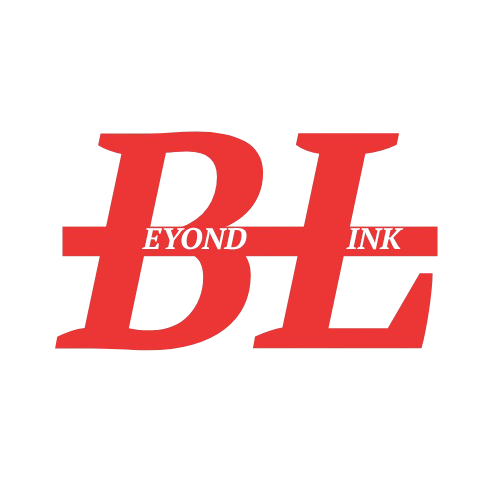NAPA, CALIFORNIA — On the second day of The Business of Beauty Global Forum, executives, founders and creators driving the industry forward took to the stage to talk about how to move on pace with culture; seizing opportunities among underserved groups, including men and people of colour; and what serving a community looks like in 2025.
The talks took place against a backdrop of subdued industry growth. In a strained environment, shoppers are choosier than ever.
“Beauty brands are having to work harder than ever to convince shoppers that little luxuries are necessary,” said Priya Rao, executive editor of The Business of Beauty.
Moving at the Speed of E.l.f.
The author has shared a YouTube video.You will need to accept and consent to the use of cookies and similar technologies by our third-party partners (including: YouTube, Instagram or Twitter), in order to view embedded content in this article and others you may visit in future.
E.l.f. Beauty, which got its start selling premium cosmetics for $1 online in 2004, has captured the industry’s attention with its scrappiness, agility, timely marketing and hit products. The label has reported 25 straight quarters of net sales growth, and most recently, made headlines for its blockbuster acquisition of Hailey Bieber’s label Rhode.
In the 11 years since Tarang Amin has been chief executive of the company, sales have grown from $100 million to $1.3 billion. Amin highlighted what it takes to move at the speed of E.l.f. in a fast-paced beauty market — or, in his words, how to “keep the E.l.f. up!”
Success starts with a strong, empowered team that’s reflective of the consumer base:
“We’ve never had a DEI programme, quotas or some of the things that are being attacked because it’s more fundamental for who we are. We strongly believe that if your team reflects the community that you serve. It’s a competitive advantage,” said Amin.
The brand keeps channels of communication open with its community — showcased by the casual and transparent way it announced its tariff-driven price increases on social media. Executives often hop on TikTok Live to ask shoppers what they want, and actually listen. Amin moved the launch timeline for liquid bronzer drops up to meet fans’ demands, for example.
At a time when consumers’ budgets are pinched, the company’s mission of accessibility becomes all the more important, said Amin: “You shouldn’t have to choose between high quality cosmetics and a carton of eggs.”
Seizing the Men’s Beauty Opportunity
The author has shared a YouTube video.You will need to accept and consent to the use of cookies and similar technologies by our third-party partners (including: YouTube, Instagram or Twitter), in order to view embedded content in this article and others you may visit in future.
There’s long been a notion men aren’t interested in beauty — that they want basic products, or whatever their significant other buys for them. A number of challenger brands, including grooming line Horace and soap-maker Dr. Squatch, are trying to upend that notion and speak to men who aren’t used to being addressed by the industry.
“Men feel like it’s finally okay to use products, but they didn’t know they existed … they are way more open to the product than we usually think,” said Marc Terlet, CEO and co-founder of Horace.
While they are looking for a lot of the same basic themes— functionality, efficacy, affordability — men are not a monolith. There are a variety of unique audiences to reach and ways to reach them. Half the battle is getting men’s attention. Dr. Squatch deploys celebrity ambassadors, including, most recently, with its viral (and controversial) soap made with actress Sydney Sweeney’s bathwater.
“How can you get them to pay attention, and to focus? By doing things that are disruptive, and out there so you can capture people’s attention. And then once you have the attention, you can use the attention to communicate something that’s really important,” said John Ludeke, SVP global marketing at Dr. Squatch.
Strategic Reinvention: Growing a Beauty Brand With Staying Power
The author has shared a YouTube video.You will need to accept and consent to the use of cookies and similar technologies by our third-party partners (including: YouTube, Instagram or Twitter), in order to view embedded content in this article and others you may visit in future.
It’s never been easier to start a brand, but building one that can go the distance — withstanding macro shifts and ever-changing trends — is getting harder.
After 15 years in business, armed with a slew of hero products, strong distribution and a powerful owner in Unilever, Tatcha — founded by Wall Street burnout Vicky Tsai — has been re-evaluating what makes the brand great, and how it fits into where beauty is going. Chief marketing officer Nicole Frusci and Christopher Skinner, chief revenue officer at brand accelerator Front Row, discussed how they’re reinventing the label on the precipice of a big push to scale up and move away from its exclusive relationship with Sephora into other channels.
Its motto “to reawaken beauty from skin to soul,” they thought, came down to the idea of self-love. Their new north star is “to inspire self love as a quiet, lasting revolution,” said Frusci. It’s a theme the company is incorporating in everything from creative to educating new employees on company culture.
“Brands are like pencils. You don’t necessarily need to throw the pencil away. Decisions and changes in leadership just slowly kind of dull the pencil down, and it takes bravery — if you recall those sort of manual sharpeners in class — to stand up in front of everyone walk over, put it in and start to sharpen, and ultimately, that’s what we did,” said Skinner.
The Influencer Brand Masterclass
The author has shared a YouTube video.You will need to accept and consent to the use of cookies and similar technologies by our third-party partners (including: YouTube, Instagram or Twitter), in order to view embedded content in this article and others you may visit in future.
In beauty, a mention by the right influencer can turn a sleepy product into a viral sensation.
Building a brand as an influencer, though, isn’t easy. Influencer brands are often subject to extra criticism and scrutiny — and community doesn’t always translate directly into sales.
Two of beauty’s biggest influencers, Susan Yara and Mikayla Nogueira, came to the BoF stage to share their brand-building roadmaps; Yara, having sold Naturium to E.l.f. for $355 million in 2023 and Nogueira having just recently launched Point of View, a skincare line (soon to include makeup), with the help of Imaginary Ventures. Both are making a bid at beating the influencer brand curse — initial hype at launch, followed by a free fall — with savvy investors and operators that understand influencer culture and can help scale their visions.
“When you’re first building a brand, you have to deal with the cash flow problems, you have to deal with management and being an inspiring leader. But now I am on this other side of it, where I really get to focus on what I do best,” said Yara.
Maintaining trust and transparency with your community, especially when it evolves as the brand grows, is also important.
“When you’re an influencer and you choose to create a brand, you have the responsibility to not create the brand for yourself, but to create the brand for the community,” said Nogueira.
Transformation Not Turnaround: The Olaplex Story
The author has shared a YouTube video.You will need to accept and consent to the use of cookies and similar technologies by our third-party partners (including: YouTube, Instagram or Twitter), in order to view embedded content in this article and others you may visit in future.
Haircare brand Olaplex had a storied rise, which only made its big fall more dramatic.
After introducing its revolutionary bond-building technology, it was acquired in 2020, IPO’d in 2021 and reached net sales of $800 million in 2022. Then, sales plummeted and the brand came under fire from angry customers, some of whom filed a lawsuit alleging hair loss and fraudulent claims by Olaplex.
Former Supergoop CEO Amanda Baldwin joined Olaplex in December 2023 with the task of getting the brand back on track — but don’t call it a turnaround. She’s dubbed it a transformation.
“I’m not interested in going back in the other direction. Everything that happens to a brand along the way is part of a journey,” said Baldwin.
Hair is complicated: prestige haircare is a relatively new, highly personal category. Brands have to sell across channels, including to direct-to-consumer shoppers, who expect eye-catching marketing, and to the professional network, which is looking for innovation. The label reset its international business, which makes up half its sales. Then, it reworked its stark, scientific image to make it more approachable and focused on doing more storytelling, even changing the brand’s main colour to red: “The alchemy of science and style wasn’t coming through,” Baldwin said.
At the other end, it’s catering specifically to the professional network that propped it up in the first place with new launches including scalp treatments and bond shapers designed for curly hair.
“It’s my mission to do right by this community, because Olaplex wouldn’t exist without them,” said Baldwin.
Community, the Key to a Winning Strategy
The author has shared a YouTube video.You will need to accept and consent to the use of cookies and similar technologies by our third-party partners (including: YouTube, Instagram or Twitter), in order to view embedded content in this article and others you may visit in future.
The word “community” is so overused by brands, it’s losing its meaning.
Pattern Beauty, however, defies the cliché by being in true service to its large and historically underserved and underestimated community of non-white consumers with curly, coily and tight-textured hair.
Founder Tracee Ellis Ross relayed the brand’s origin story, casting it as an outgrowth of her own struggle as a Black woman to “figure out” her textured hair in a society built around fixing it: “Through all those years I was gaining experiential knowledge.”
Her goal is for Pattern Beauty’s products to give customers the tools they need to embrace and support their natural hair, rather than treating it as a problem to be solved.
“I came with the expression of ‘this community needs to be supported,’” said Ross. “If you come from the place of supporting and celebrating the joy, the beauty and the power of who this customer is, you actually have an opportunity to take all that wasted space that is not serving this customer and turn that into money, and purpose, and value.”
The Business of Beauty Global Forum 2025 is made possible in part by our partners Front Row, Unilever Prestige, Citi, McKinsey & Company, Getty Images, Grown Alchemist and Stanly Ranch and our awards partners L’Oréal Groupe and Sephora. If you are interested in learning about partnership opportunities, please contact us here.



